How to properly preserve cuttings of roses until spring
Content
How to keep in soil
Every florist knows that it is better to plant cuttings of roses in June - July. Then, by the end of summer, they will take root, sprout, and in the fall, young seedlings can be transplanted to a permanent place. But what if good planting material appeared late? In a southern climate with relatively warm winters, planting seedlings in the fall is practiced, but in a temperate, and even more so in a northern climate, it is better to keep the cuttings of roses until spring, and then plant them in well-warmed soil.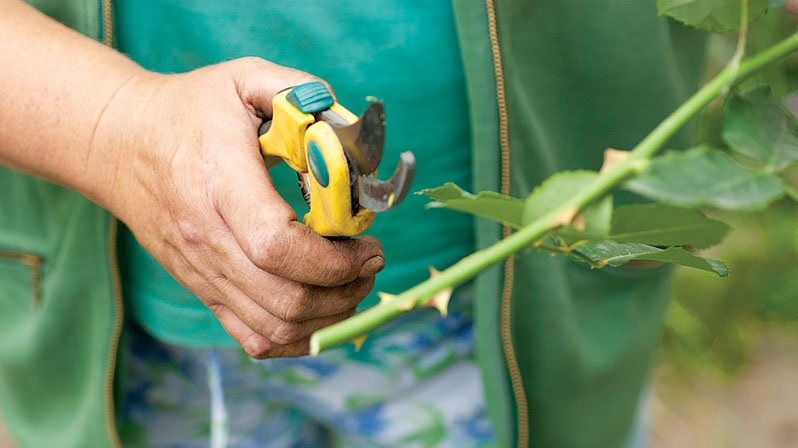
Temporary storage of cuttings in soil is a fairly common option. Of course, it is not ideal, since the soil freezes in winter, but many ways have been invented to protect shoots from external influences and increase their chances of survival:
- cuttings should be of high quality and healthy - the highest chances to survive until spring have powerful shoots as thick as a pencil;
- it is equally important to make the cuts correctly - the lower cut should be made at an acute angle slightly below the kidney, and it is recommended to leave the upper one straight, cut off with a sharpened instrument;
- all leaves must be cut off from the shoot;
- further, the sections must be treated with an agent that inhibits the growth of the shoot - paraffin is best suited, which must be heated, dipped the cuttings into it and quickly lowered into cold water.
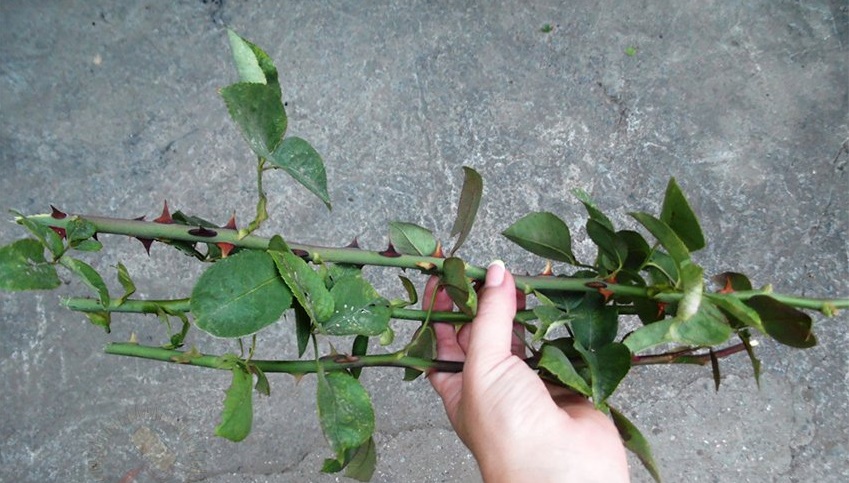
Such blanks can easily overwinter in the soil and not release the roots prematurely. Now you should think about how to effectively keep the cuttings of roses clearly until spring and choose the most acceptable method:
- small pits - this method is suitable for short storage (1-2 months);
- shallow trench with protective material;
- cellar or basement;
- cold greenhouse.
Let's consider each method more specifically. The most common way to dig in cuttings in the country is a trench. It is necessary to dig a shallow (20 cm) long hole, line its bottom with straw or non-woven protective material (agrospan). Prepared cuttings should be laid on this pillow, covered with the same covering material on top, and then covered with earth. The stems must be folded so that there is little space between them. The place where the planting material is buried should be marked with small pegs to make it easier to find it in the spring.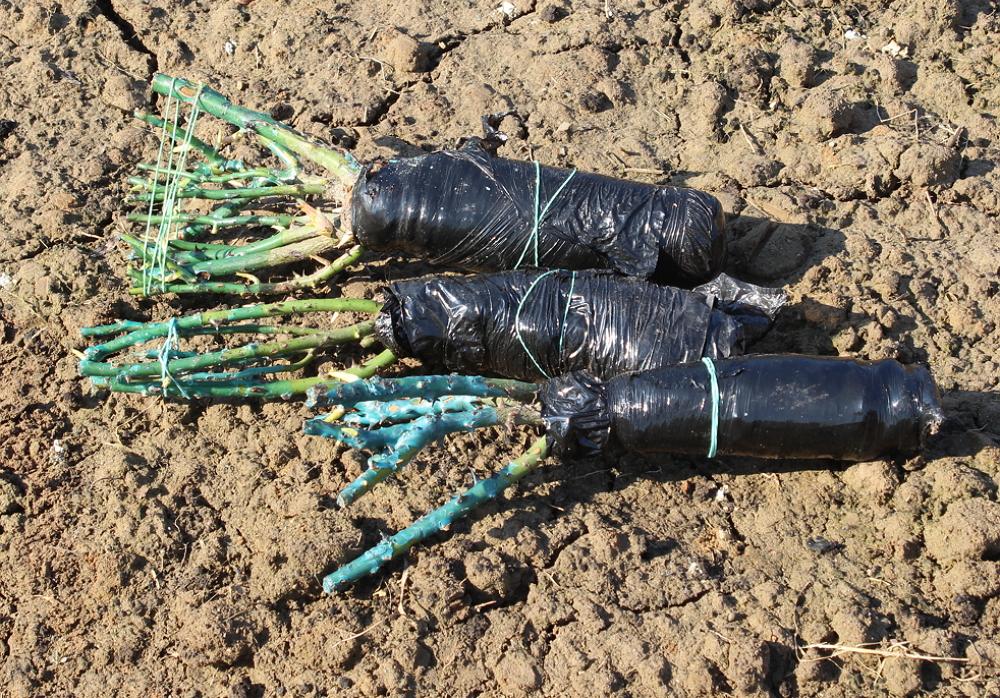
But also in winter, cuttings can be stored in a cellar or basement. With this method, they are tied in bundles of several pieces, placed in boxes, and sprinkled with sand.
It is necessary to ensure that the room is always cool - otherwise the cuttings may take root.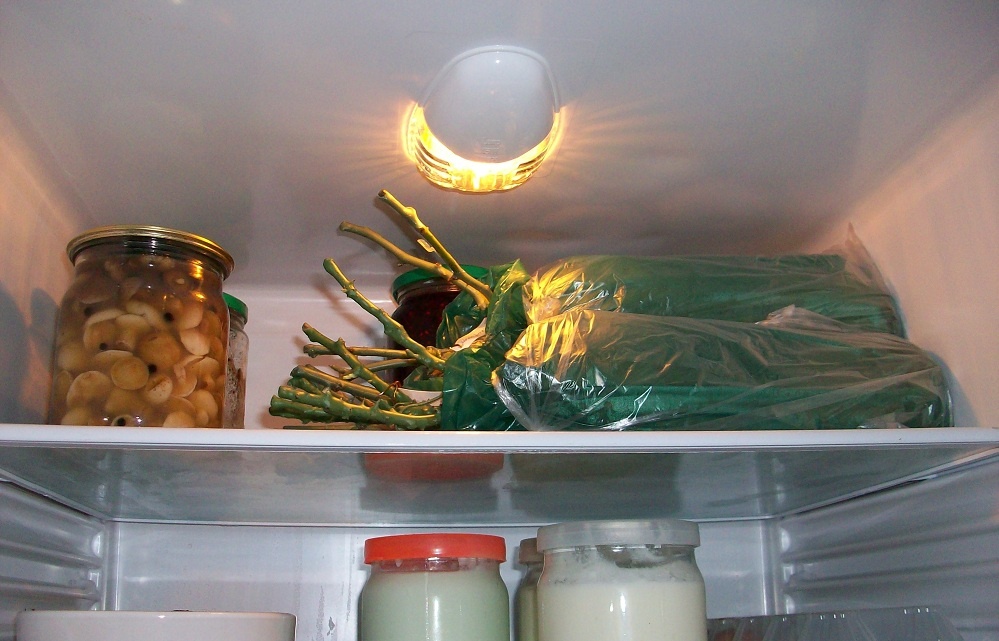
A cold greenhouse is a small structure in the ground that allows you not only to preserve planting material, but also to root it. To set up a greenhouse, it is necessary to dig a hole 70-80 cm deep, lay straw on the bottom in layers (hay is possible), peat on top, then a layer of earth.The cuttings are wrapped with a dry cotton cloth, placed horizontally. A layer of straw or foam is laid on top, everything is covered with earth. During the winter, growths form on the cuttings, from which roots will soon appear. Shoots preserved in this way take root very quickly. And if everything was done correctly, then by the fall you can expect the first flowering.
Soil storage video
From the video you will learn how you can save seedlings in the soil in winter.
How to use moss
In gardening, sphagnum moss is used for many purposes. This bog plant has unique properties:
- can retain moisture in an amount 20 times its own weight;
- contains antibacterial compounds, thanks to which it can be stored for a very long time without losing its valuable qualities.
It should be noted that high moor peat consists of dead sphagnum particles, and it is considered the most breathable and fertile peat layer. As for the use of moss in horticulture, tubers, bulbs and other seeds are perfectly preserved in peat moss. Its loose structure guarantees excellent ventilation, and its antibacterial properties prevent rotting and mildew.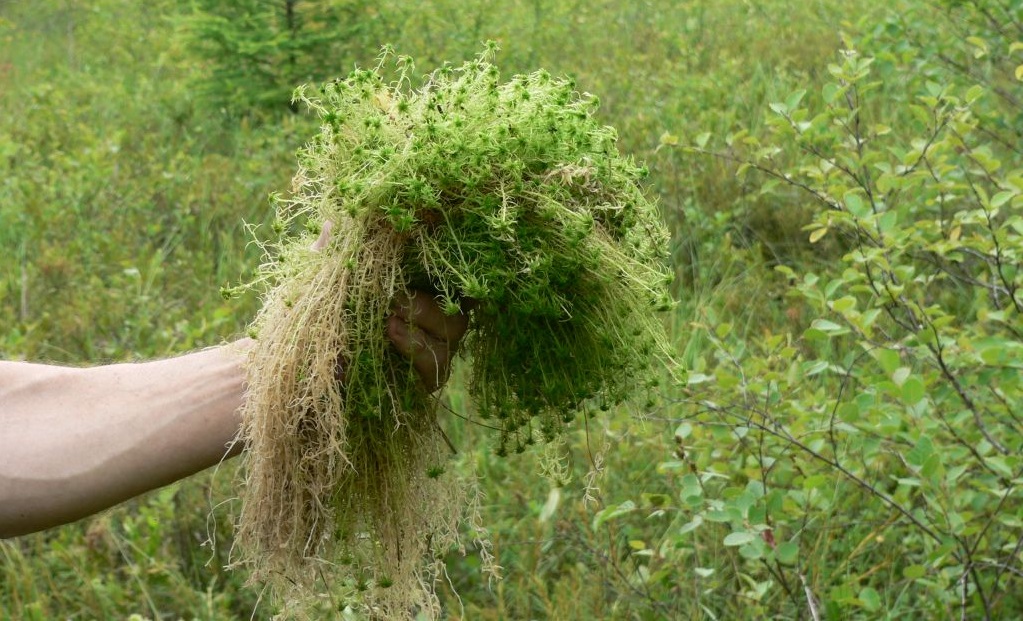
These qualities make it possible to use moss for storing rose cuttings. Before using the material, the lower cut of the moss must be treated with Phytosporin or aloe juice diluted with water in a 1: 9 ratio. Then the cuttings should be wrapped in moss, placed in a plastic bag, and put in a cold place - if there is no cellar or basement, then you can put it in the lower compartment of the refrigerator. If the moss begins to dry out, take out the bag and lightly spray the moss with water.
In early March, you can start rooting cuttings. They must be removed from the bag, freed from sphagnum, removed the thorns, if the sections were covered with paraffin, remove the paraffin. Next, you should prepare a container with a substrate in which the roses will be planted.
A thick layer of moss is placed on the bottom of a box or other container, a small (3-5 cm) layer of pre-washed river sand is poured onto it. Cuttings are buried in this mixture at a slight slope so that no more than two buds remain on the surface. Then the container with seedlings is covered with a bag with several holes (for ventilation), and placed in a bright, warm place, but not in direct sunlight. The substrate must be periodically moistened. With this method, cuttings of roses take root very quickly.
Rooting in potatoes
Another moisture-consuming material is raw potato tubers. Rooting cuttings of roses in potatoes is a fairly reliable and proven method, since potatoes not only provide constant moisture, but also contain a considerable set of nutrients, in particular starch, necessary for normal development of roses. For those who do not yet know how to save cuttings of roses in ordinary potatoes until spring, an exact algorithm of actions is proposed:
- choose medium to large sized, undamaged potato tubers;
- remove the eyes and process the potatoes with any fungicide (optional measure);
- we process the cuttings with a solution of potassium permanganate;
- we put the material for 12 hours in any growth stimulator (you can use fresh aloe juice diluted with water 1: 1);
- in each tuber, using a thin object (screwdriver, nail), we make a depression into which we place the cutting;
- now we bury the potatoes in a pot (container) with an earthen mixture - as an option, the potatoes can be placed in a bag and hung by the window.

Further care of the cuttings consists in the timely moistening of the soil. Once a week, it is advisable to water the sprouts with sweet water (1 tablespoon of sugar / glass of water), after a month, feed them with a complex mineral mixture. While the cuttings are rooting, they must be covered with a glass jar to create a greenhouse effect. After 2-3 weeks, the growth of the kidneys will become noticeable.After that, the shelter is removed, and the seedling is gradually accustomed to the environment. This method allows you to grow full-fledged seedlings during the winter, which in spring can be transplanted into the ground, and by autumn you can admire the flowering of roses.
Winter on the balcony
Shelter cuttings or seedlings of roses on the balcony is important for city dwellers who have only a glazed loggia or balcony from cold rooms. With this method, cuttings are prepared and processed in the same way as before storage in soil. To preserve the planting material, you need to select unnecessary boxes or buckets. Pour a drainage layer (expanded clay) into these containers, and on top of it, earth mixed with perlite.
Before planting, the soil mixture should be well moistened, and the cuttings should be soaked in a growth stimulator. Next, make small holes in the soil and deepen the cuttings there. If the winters in your area are not cold, the cuttings can be wrapped in paper, wrapped in plastic bags, and simply packed in cardboard boxes. It is clear that with the onset of frost, even on the glazed balcony, there is a threat of freezing of the planting material, so it is important to know how to cover the cuttings of roses for the winter.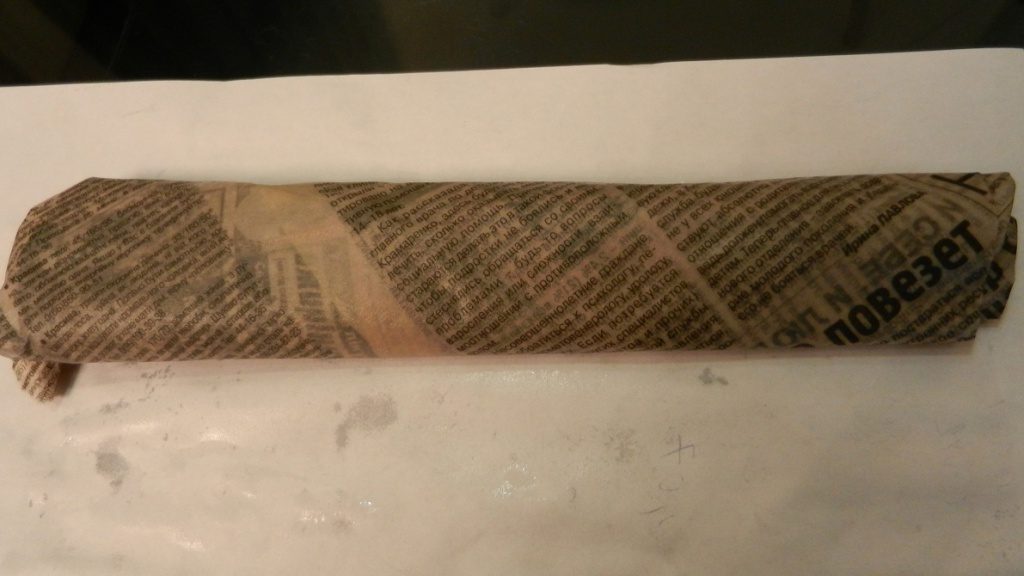
A bucket (container) with cuttings must be wrapped in a plastic bag and secured on top (clothespins can be used for this purpose), and the bucket itself must be wrapped with something warm, for example, an unnecessary blanket. In this form, the structure is carried out onto the balcony. Cuttings should not be watered often. In sunny weather, the film cover can be removed for a short time, and the cuttings can be sprayed with water. In case of severe frosts below (-10-20 ° C), it is better to bring the cuttings indoors.
Florists who grow roses at home in pots will be interested in knowing how to preserve rose seedlings between flowering periods. Pruned seedlings in pots, perfectly stored at temperatures from +3 to -4 ° C. Such conditions can easily be created on a glazed balcony in winter, where the plants, being in a state of sleep, will be perfectly preserved, and in the spring they will grow with renewed vigor.
Video "Storing seedlings until spring"
From the video you will see how to properly store seedlings until spring.



